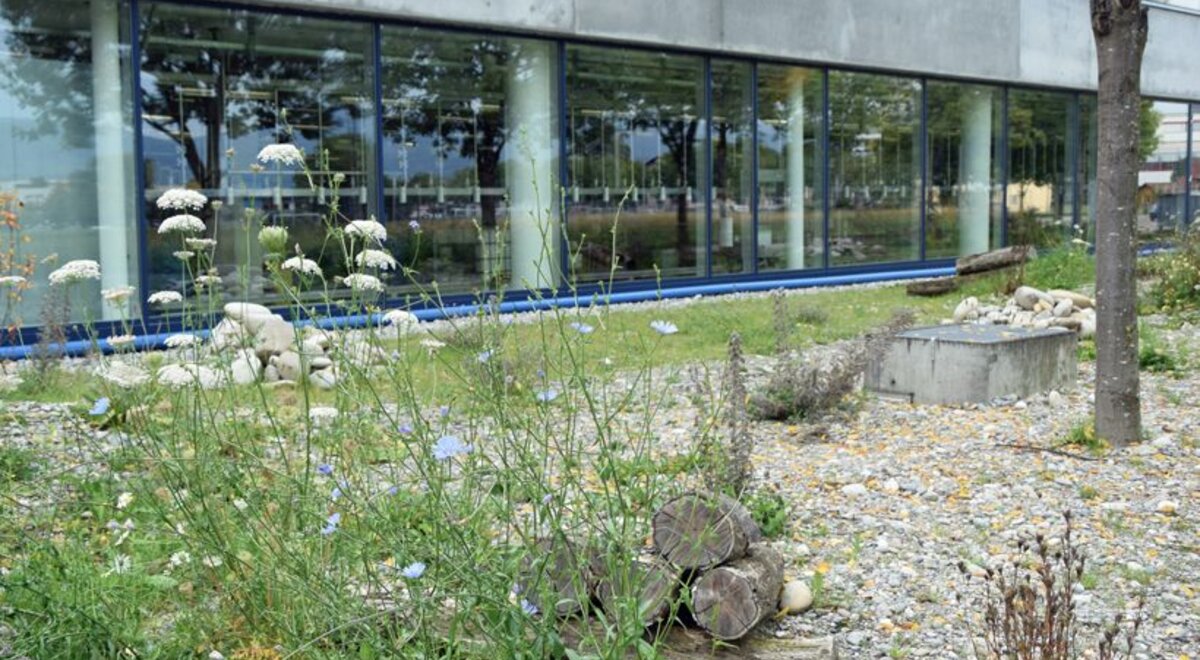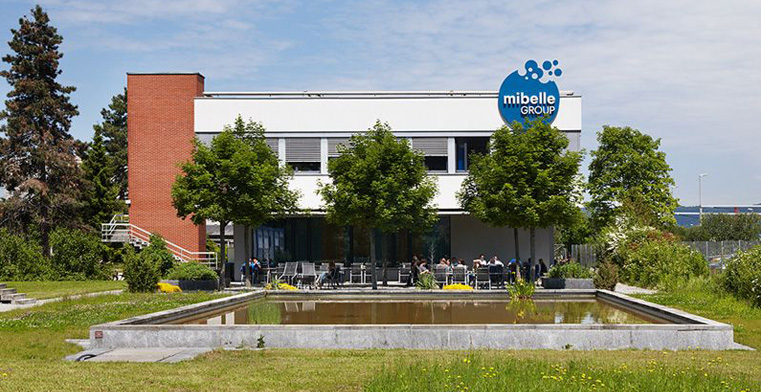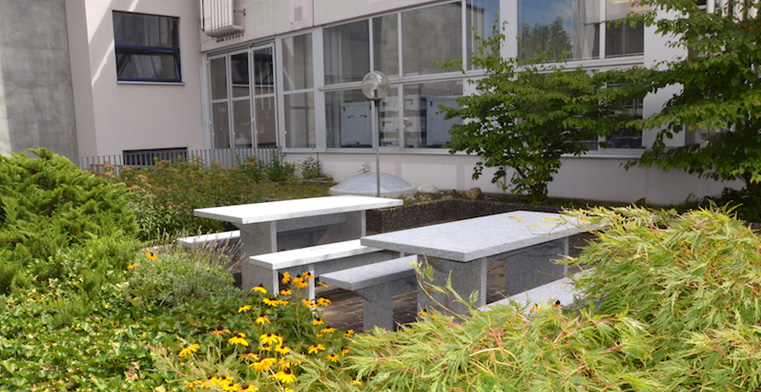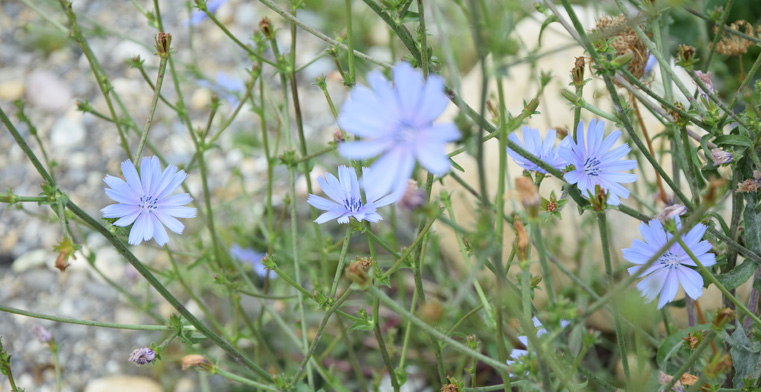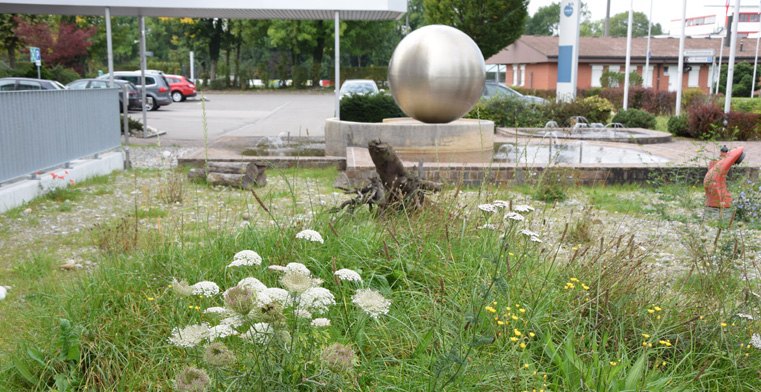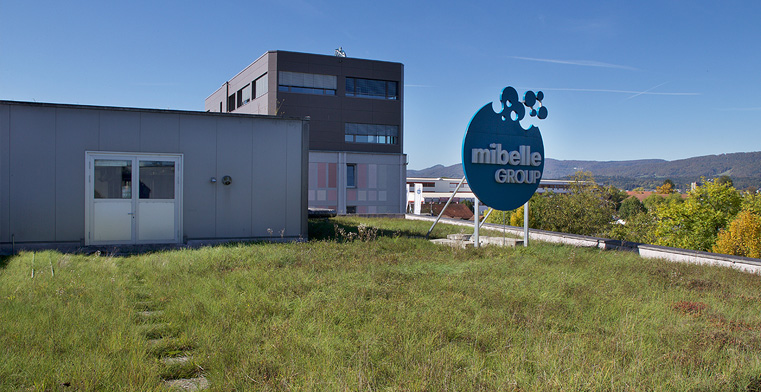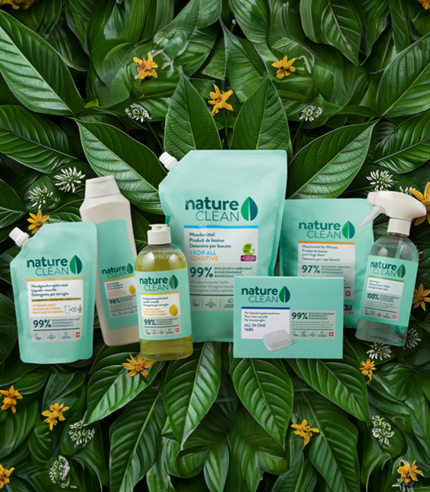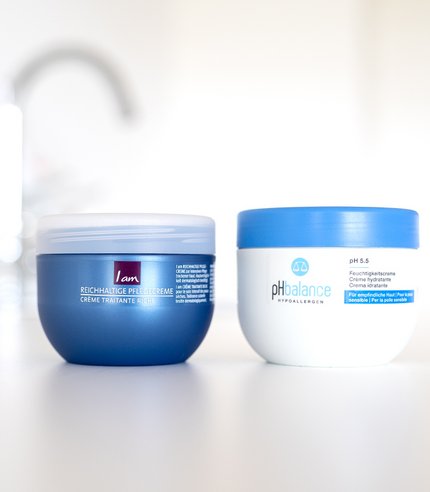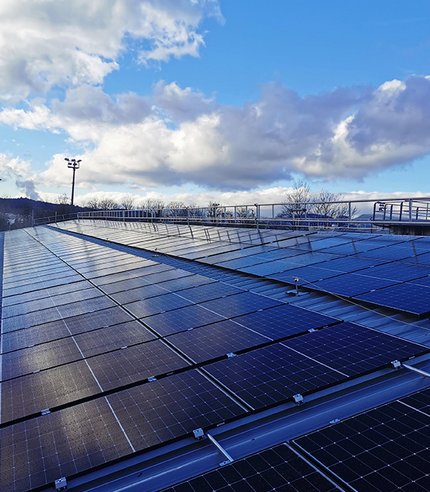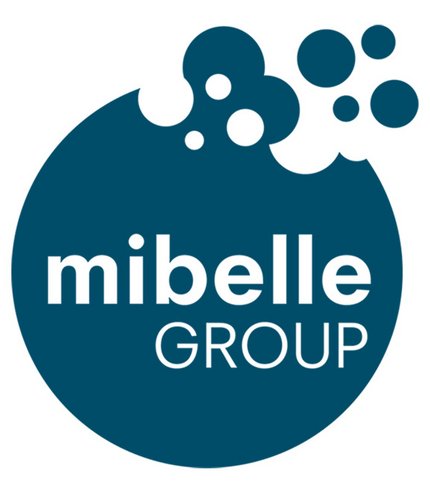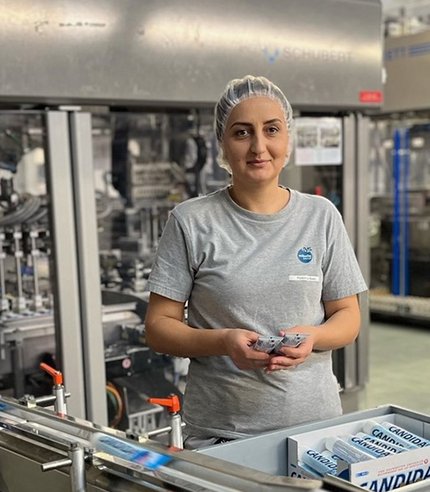Specific design principles and maintenance routines ensure the creation of valuable habitats, food supplies and protection for plants and animals in the heart of the industrial sites at Buchs and Frenkendorf. The most important principles are use of native plants and materials appropriate to the site, and a prohibition on the use of artificial fertilizers and pesticides.
The redesigns have transformed the Mibelle Group’s sites into naturalistic gardens. The former lawned areas are now adorned with native perennials, shrubs and small structures providing valuable habitats for various species of animals and plants. Borders have been redesigned and various roofs extensively greened. The areas are an example of successful encouragement of nature on an industrial site and this has been recognised by the Stiftung Natur & Wirtschaft. The Stiftung Natur & Wirtschaft promotes natural planning and design of corporate sites, residential developments, school grounds and gravel extraction sites.
Perennial flower meadows encourage species diversity
Not only are meadows rich in species lovely to see, they provide food for bees and butterflies and are therefore more valuable ecologically than uncultivated areas. Food is scarce for many pollinating insects in cities and due to large-scale agricultural monocultures.
Species-rich meadows provide insects with food and protection and their diverse flowers are one of nature’s loveliest sights. Broad-leaved thyme, for example, meadow clary and black mullein now grow on the company’s sites and attract a variety of insects. The flower meadows are allowed to grow wild to a certain extent, are mowed comparatively infrequently and later in the year.
Dead wood provides valuable habitat for insects
It is possible to create mini biotopes with piles of dead wood and individual logs. They provide a variety of animals with a habitat. The rhinoceros beetle, for example, feeds on rotting wood, some birds make their nests in dead wood and hedgehogs like to hibernate in piles of dead wood or brush.
Green roofs as eco-friendly homes
Green roofs are a good opportunity to return these areas to nature with positive results. Green roofs retain rainwater, improve the air in the building and the visual landscape and keep the air clean by absorbing dust. They are more ecologically beneficial than bitumen or gravel roofs and ideally provide many species of animals and plants with a home. They provide unique ecological niches, with their sparse nutrient conditions and extremes of light and moisture.
The attractive naturalistic design of the Mibelle Group’s sites not only benefits animals and plants, but also people. Employees are able to use these natural oases to rest and relax during their breaks, and for inspiration.

